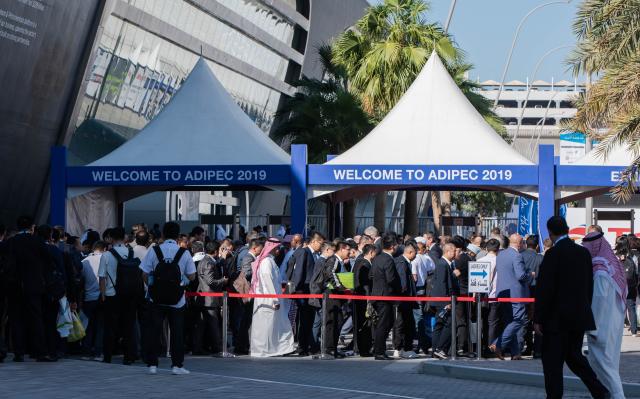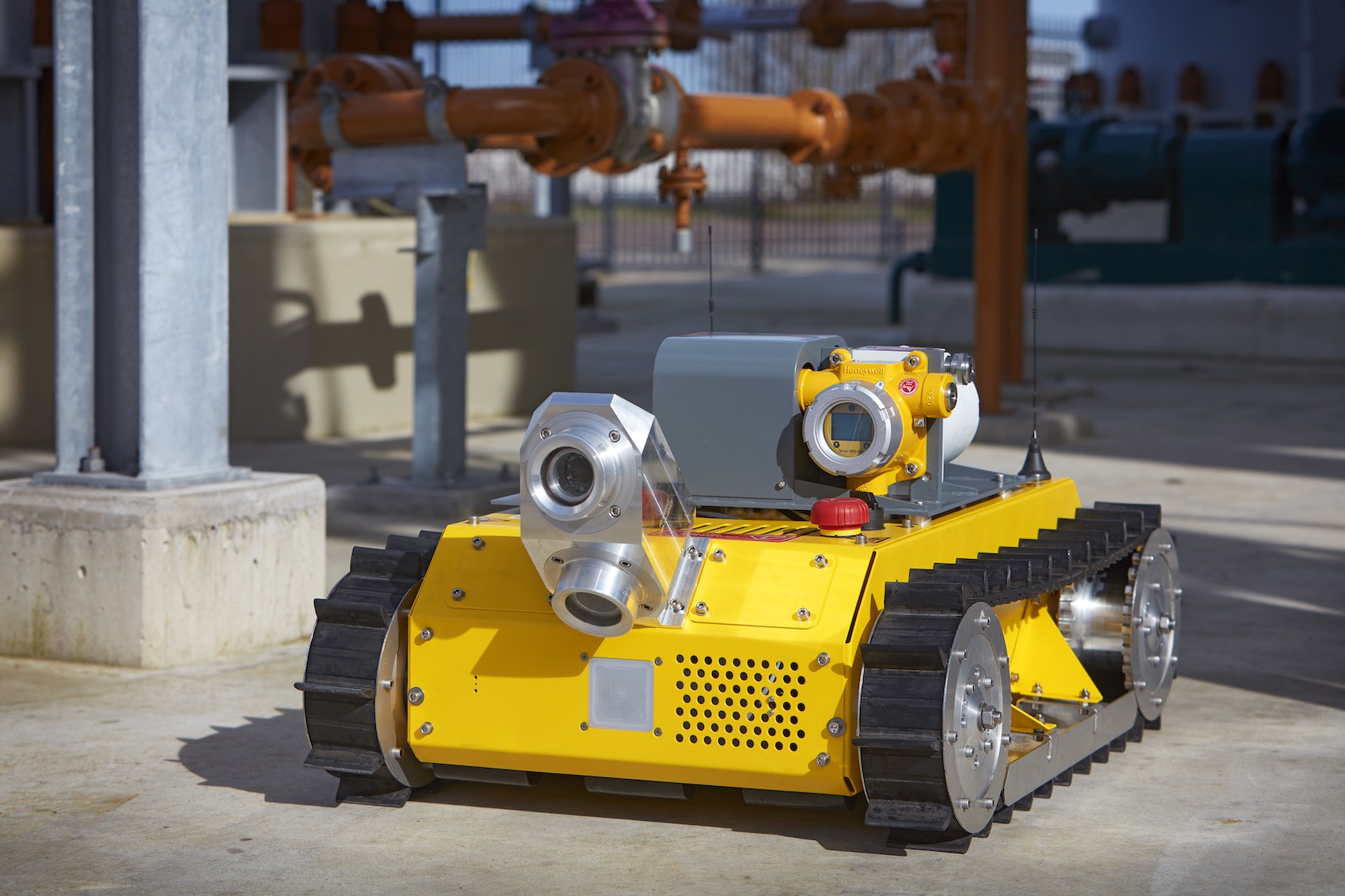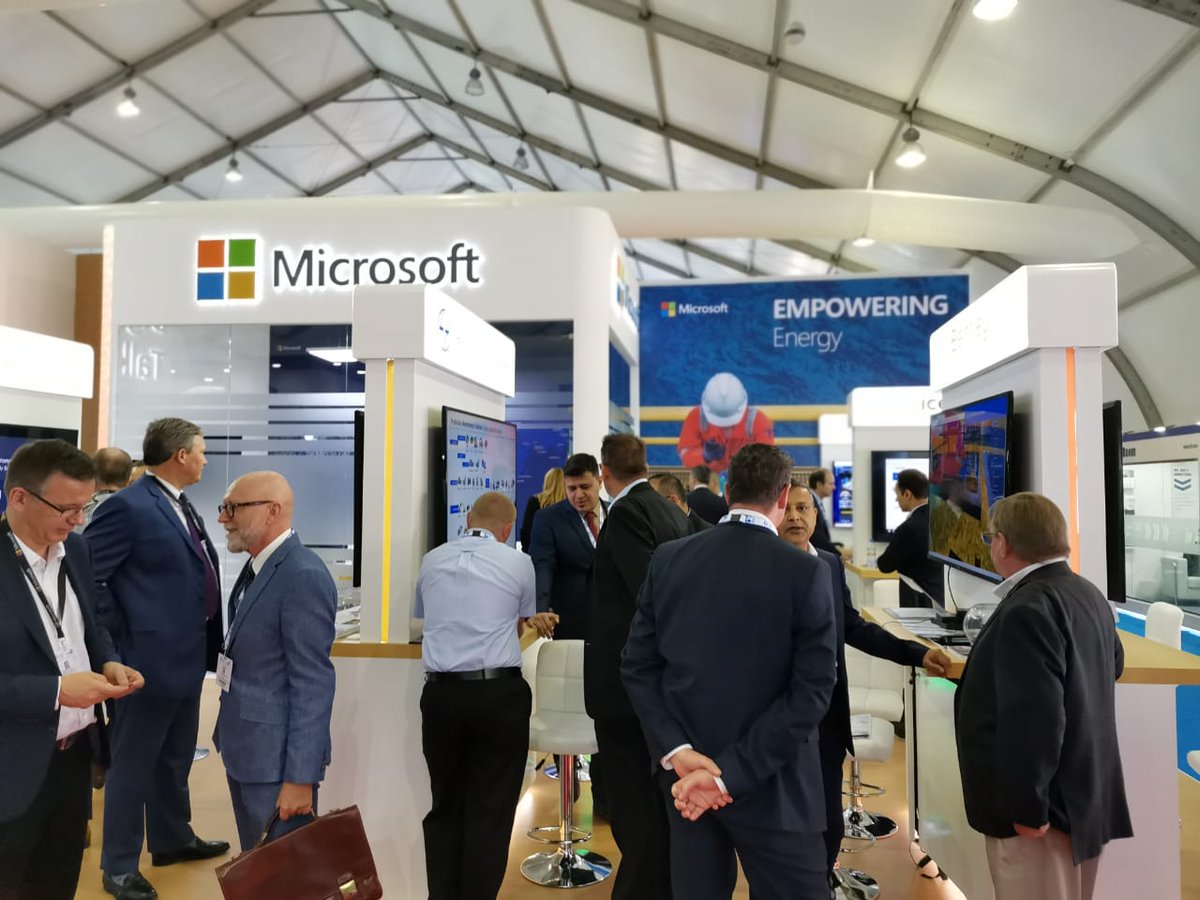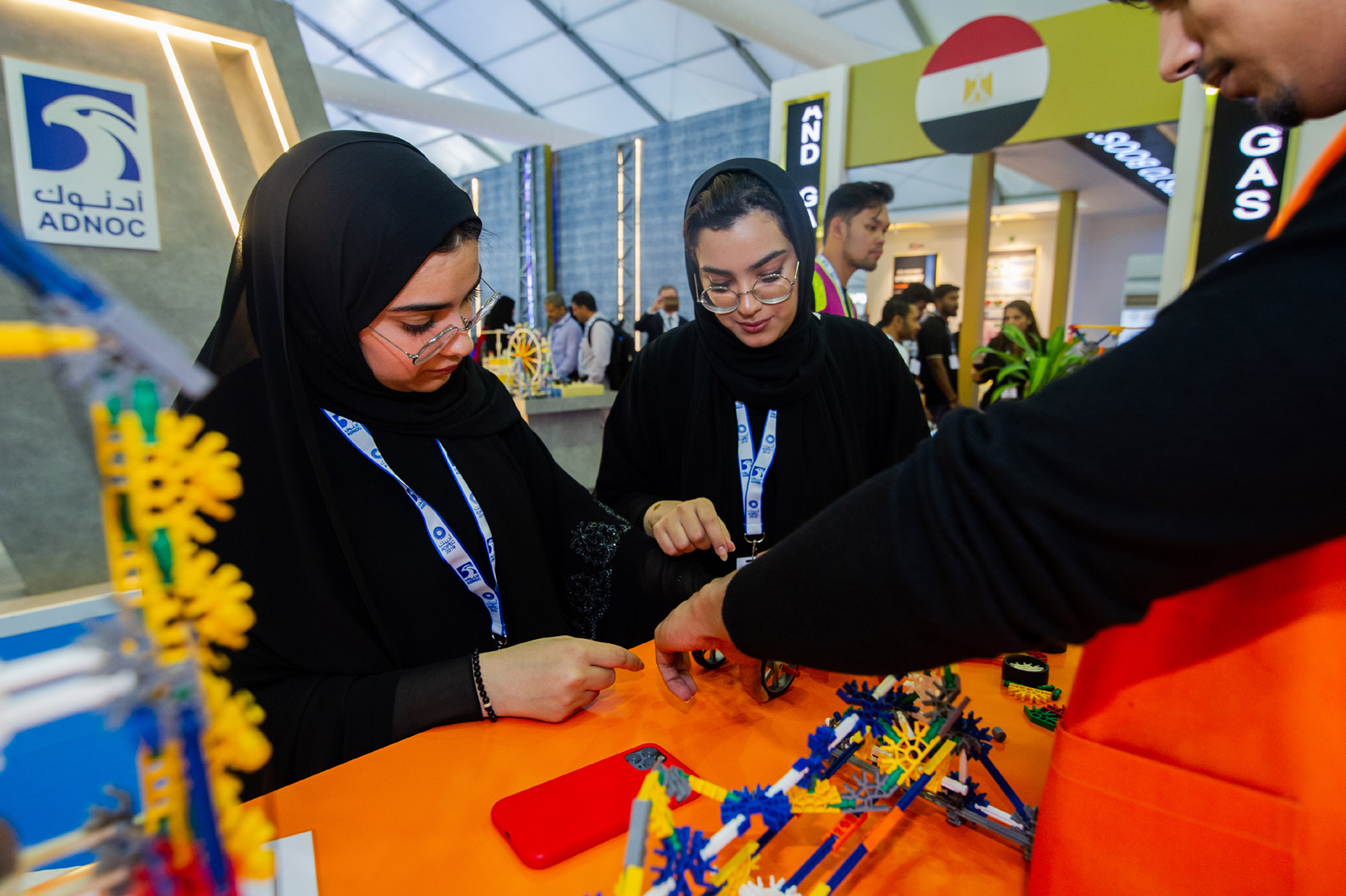
ADIPEC attracted more than 155,000 visitors from 167 countries. (Source: ADIPEC)
As the wave of innovation in the energy industry continues to intensify, emerging technologies have become an integral part of oil and gas company operations. This was one of the key messages at the Abu Dhabi International Petroleum Exhibition and Conference (ADIPEC), where companies across the entire hydrocarbons value chain discussed technological advancements, capabilities, investments and horizons that need to be matured or reached to reap the benefits of digitalization. Centered on the theme “Oil and Gas 4.0,” ADIPEC 2019 focused on the need to automate operations to maximize value and slash costs.
Hosted by the Abu Dhabi National Oil Co. (ADNOC), the conference agenda linked oil and gas to the Fourth Industrial Revolution and the emerging technologies that are transforming productivity and efficiency in an industry that contributes almost 30% of national GDP in the United Arab Emirates (UAE), according to its Ministry of Economy.
Digital transformation of the oil and gas industry in the Middle East and North Africa (MENA) continues to be fast tracked, as energy companies across the region have ramped up investment in technologies supporting efficiency and optimization of costs in E&P, according to recent studies. In the past five years, the MENA region has seen a strong focus on cost reduction as oil and gas companies have responded to changes in the energy market, with much of the industry’s R&D budget focused on technologies to enhance the efficiency of new and existing projects.
“Our industry is being disrupted at multiple levels by new technology, new businesses, operating models, new forms of energy and a new geopolitical order,” said Dr. Sultan Al Jaber, UAE minister of state and CEO of ADNOC, speaking at the opening ceremony of ADIPEC.
“This year of disruption is just beginning and will only gather pace over time. Yet, the oil and gas company of today can be a winner of tomorrow if it operates in a lower level of cost and a higher level of performance, if its brings digital into the core of its operations, if it embeds sustainability into its DNA, and if it rethinks how to leverage its partnerships, enable its people and recenter its relationships,” he said. He further discussed ADNOC’s Oil and Gas 4.0 mission, which was defined by the company in November 2018 under his leadership. “By doubling down on this mission to modernize, the industry will remain an essential pillar of the future diversified energy mix,” Al Jaber said.
He called on industry leaders to modernize and invest in the industry’s future in response to the disruptions and fast-evolving energy landscape. Al Jaber pointed out that as the oil and gas industry embraces an age of disruption, digitalization is the next frontier in driving efficiencies, curbing costs and extracting the highest value from every molecule of hydrocarbon produced.
“The fact is that by 2040, all the energy currently consumed in the U.S., India and Japan will be added to the global energy demand. Even in the most fast-paced transition scenario, oil and gas will be the source for half of it,” he said.
ADNOC also made a series of strategic announcements during ADIPEC, including a $489 million investment to upgrade its Bab onshore field located 160 km southwest of Abu Dhabi. The investment, according to the company, will sustain long-term crude oil production capacity of the field at 485,000 bbl/d and support ADNOC’s 2030 Smart Growth Strategy to achieve oil production capacity of 5 MMbbl/d by 2030.
Another major announcement to support the strategy was made by ADNOC Drilling, a subsidiary of ADNOC, which is establishing plans of a major rig fleet expansion program. In the first phase of the program, ADNOC acquired four UAE-built land rigs with a total value of more than $100 million in November 2019. Following the integration of the four rigs, which will join the units to be added to its current fleet of 95 rigs in the first quarter of 2020, ADNOC Drilling plans to acquire dozens of additional land, offshore and island rigs by 2025.
Last year ADNOC moved up to sixth place in the ranking for the largest oil and gas reserves in the world, after discovering about 7 Bbbl of oil reserves, 58 Tcf of conventional gas and more than 160 Tcf of unconventional gas.
Oil and Gas 4.0
While defining its goal to digitalize, or “mission Oil and Gas 4.0” as ADNOC describes it, the company focused on how technology, which is transforming all the industries, can generate more value for the oil and gas industry. Consequently, the company has been investing millions of dollars into artificial intelligence (AI), the Industrial Internet of Things (IIoT), augmented and virtual reality kits and advanced analytics.
“The global energy landscape is undergoing rapid change, and the oil and gas industry is finding new and innovative ways to maximize the value and profitability of our operations,” said Omar Suwaina Al Suwaidi, chairman of ADIPEC and director of executive office directorate at ADNOC, in a statement at the launch of ADIPEC. “AI, Big Data and blockchain can enhance operational efficiency and maximize performance, while applying predictive analytics can significantly reduce maintenance costs. To continue to thrive, it is critical that we better harness our data, utilize Big Data value-adding technology and innovation, capture digital insights and understand how all aspects of our operations and activities are interconnected to unlock greater value in the evolving energy landscape.”
In line with its digitalization strategy, ADNOC announced an agreement with Group 42, a UAE-based AI, cloud and supercomputing company, to form a joint venture (JV) to develop and commercialize AI products for the energy sector. Through the partnership, ADNOC will leverage Group 42’s processing power to turn “petabytes of archival data” into new systems that will help ADNOC work more efficiently.
In 2017 ADNOC introduced The Panorama Digital Command Center, which aggregates real-time information from the company’s various business units and uses smart analytical technique models, AI and Big Data to generate insights and recommend actions. The command center is a 50-m video wall that takes up an entire floor at ADNOC’s headquarters in Abu Dhabi. In November 2019, ADNOC entered a 10-year contract with Honeywell to deploy its Forge Asset Monitor and Predictive Analytics technologies, which are expected to expand the central monitoring to include 2,500 critical rotating equipment tools across ADNOC.
Integrated with Panorama Digital Command Center is the Thamama Subsurface Collaboration Center, where ADNOC is deploying smart analytics and adopting AI platforms to solve subsurface challenges. Thamama is designed to unlock resources, optimize field development plans, reduce drilling costs and manage production capacity across ADNOC’s onshore and offshore operations. Equipped with smart data analytics to build dynamic models of the subsurface, this center helps specialists develop a more detailed understanding of Abu Dhabi’s reservoirs. In addition, Thamama can monitor up to 120 live drilling sites simultaneously, which helps reduce drilling costs, improve rig efficiencies and benchmark performances against producing wells.
Maximizing value of digitalization
During one of ADIPEC’s Global Business Leaders sessions, leaders of major oil companies agreed that innovation is the way forward for the industry. Musabbeh Al Kaabi, CEO of petroleum and petrochemicals at Mubadala Investment Co., said just like other industries, the energy industry will see a significant impact from technological disruption.
“The energy demand outlook is healthy, but after 2030, it will slow down because of how energy is used in the transport sector and with changing government policies due to sustainability issues. Therefore, the role of technology is critical to the industry’s healthy future,” Al Kaabi said.
He added that technology also could play a major role in minimizing the negative effects of climate change. For instance, innovations such as autonomous process
plant operations can reduce emissions by increasing efficiency, in turn reducing the carbon footprint.
Fellow panelist David Dickinson, president and CEO of McDermott, said the company studies how technology can help extract maximum value from engineering, procurement and construction projects. “Since projects are becoming more complex and large-scale, technology helps in answering questions like how we can do things better, quicker and cheaper for our clients while ensuring that we make the industry attractive to our future generation,” he said.
Muhammad M. Al-Saggaf, senior vice president of operations and business services at Aramco, discussed the company’s R&D and deployment of the TeraPOWERS technology, which models reservoir physics from the original generation to final production. The technology enables Aramco to model the physics of its reservoirs to prioritize prospects, reduce exploration risks and costs, and sustainably manage its reservoirs.
Digital technologies
In line with the digital transformation theme, several companies showcased unmanned vehicles, which are being largely deployed by oil and gas companies in a wide range of operations. A recent report by GlobalData showed that drone makers are collaborating with oil and gas companies to develop applications that can be customized and provide real-time insights. Key applications include remote monitoring and surveillance, inspection and predictive maintenance, methane management, emergency response and material handling.
ADNOC announced a partnership with Total to deploy drones and unmanned vehicles to collect 3-D seismic data as it expands its search for new oil and gas resources throughout Abu Dhabi. The pilot project using Total’s Multi physics Exploration Technologies Integrated System claims to be the world’s first automated seismic acquisition system, which will see thousands of sensors deployed by air using a fleet of drones and later retrieved by unmanned ground vehicles.
Another attraction at ADIPEC was the ExR-1 robot, which is designed to operate in hazardous environments. The robot is developed by ExRobotics, a Netherlands-based developer of robotics technology for hazardous environments, which entered into an agreement with Yokogawa, a provider of industrial automation, control and measurement technology, to enable Yokogawa to sell and deploy ExRobotics’ inspection robot hardware and software platforms worldwide. Equipment operating in these hazardous environments must have IECEx1 Zone 1 certification, and ExR-1 is a commercially available robot that meets the certification requirements. It can be equipped with a range of sensors and cameras, has 4G LTE wireless network capabilities and can be remotely monitored and operated by an operator located in a safe control room anywhere in the world. The robot is certified at a module level, which allows customized configuration, and has optional modules for gas detection and autonomous navigation.

Cumulus Digital Systems, a Massachusetts-based startup, showcased its Smart Torque System, which is an integrated flange management system that connects Cumulus’ cloud-hosted data management platform with bluetooth-connected digital tools. Matthew Kleiman, CEO of Cumulus, told E&P that oil and gas plants have many variables to consider such as a large number of tools and equipment, workforce with varying levels of expertise and constantly changing working conditions.
“Cumulus Digital Systems solves oil and gas plants’ biggest operational challenge with a technology solution that provides greater visibility and traceability into the quality and duration of work completed in operating facilities,” Kleiman said.
He added that recent studies have found that unplanned facility downtime costs operators more than $260,000 per hour and over $140 billion per year, giving oil and gas plants the highest percentage of downtime in any industry.
“The biggest reason oil and gas suffers this challenge is a lack of data transparency and traceability when it comes to maintenance and repairs. From a business perspective, this is incredibly costly, but even more importantly, it creates dangerous and challenging work conditions as well as living conditions for people near plants,” Kleiman said.
The Smart Torque System eliminates flange leaks and the associated unplanned downtime by eliminating the chance of human error at each of these common failure points.
Strategic partnerships
Several studies show the potential impact of AI on the future course and competitiveness of the oil and gas industry could be dramatic, radically changing the traditional practices and delivering new sources of value. According to the World Economic Forum, primary savings generated from robotic applications and Big Data analytics could total $500 billion by 2025. By showcasing the potential of AI and the reach of virtual reality, technology companies are wooing energy companies to form partnerships.
In September 2019, Baker Hughes and C3.ai announced the release of BHC3 Reliability, an AI software application developed by the BakerHughesC3.ai JV. The application uses deep learning predictive models, natural language processing and machine vision to continuously aggregate data from plantwide sensor networks, enterprise systems, maintenance notes, and piping and instrumentation schematics.
“Just 90 days after the joint venture, we announced our first application BHC3 Reliability, which was a big moment for us,” Dan Brennan, vice president and COO of digital for Baker Hughes, told E&P at ADIPEC. He has been leading the operations of the BakerHughesC3.ai JV. “We’re trying to optimize for speed, which is a big impediment for us as well as our customers,” he said.
Over the past 20 years, there has been significant investment in automation technologies. With engineering
and further innovation on the equipment side, critical machinery is much more reliable. There is a need to continuously improve the plant reliability to move beyond the critical equipment. “We’ve used a physics-based and hybrid approach to increase productivity,” Brennan explained.
Microsoft had a strong presence at ADIPEC, showcasing the latest technologies to the region’s oil and gas organizations to harness the power of digital transformation.
“The sector is currently undergoing a paradigm shift and energy companies are rapidly digitalizing. Microsoft is empowering the industry to accelerate that process through solutions that connect field operations to the back office as never before,” Omar Saleh, head of energy and manufacturing at Microsoft Middle East and Africa, told E&P.
“These solutions enable more intelligent processes by using the data streaming from connected sensors and the vast amounts of structured and unstructured data that the industry has amassed over past decades. The intelligent cloud offers computing power and a rich menu of advanced tools such as machine learning, which can analyze these data for predictions and insights. Our productivity suites complement by streamlining those to the workforce in a secure and actionable manner, therefore empowering a connected and integrated experience to everyone,” Saleh continued.
He explained that Microsoft structured its sustainable solutions to tackle the environmental challenges of the energy industry. For instance, AI for Earth is an initiative that focuses on solutions for global environmental challenges. Digital assistants and robots provide guidance and extend governance for safe operations. Wearables complemented by AI algorithms help track the condition of workers as well as their location and adoption of safe behaviors. Greenhouse-gas emissions and hazardous gas leakages also can be identified and contained in a timely manner toward saving lives and protecting the environment.
“At Microsoft, we also realized that for companies to maximize their leverage of digital, we need to equip the workforce with the necessary skills,” Saleh explained.
He added that readiness on AI and cloud capabilities is crucial to support planning, deployment and adoption of digital for executives, information workers, IT professionals and field personnel. Therefore, Microsoft has made dedicated investments in digital skilling programs including role-based content and curriculums, dedicated trainers and program managers as well as certifications that address its customers’ learning needs and help them instill a digital-ready culture across their organizations.
“As we skill, upskill and reskill the workforce, the oil and gas industry will reap the benefits of a richer talent pool of cloud specialists, data scientists, AI experts and security mavens who can lead their digital transformation agendas,” Saleh said.
At ADIPEC, Microsoft also announced plans to open an AI Centre of Excellence for Energy in the UAE “to empower organizations in the industry in accelerating digital transformation,” equipping the workforce with AI skills as well as collaborating on coalitions to address sustainability and safety challenges, according to a press release.

Sustainable energy
Several panel discussions at ADIPEC centered on sustainability issues, with company heads agreeing that a successful transition to a lower carbon economy requires traditional fuels to be delivered in a way that minimizes environmental impact. Also, CEOs of major oil companies stressed the need to make gas a greater part of the energy mix.
At one of ADIPEC’s ministerial panel sessions, Mohammed Hamad Al Rumhy, Oman’s oil minister, said while Oman is not slowing down its oil production, there is greater emphasis on boosting the country’s gas production amid the shift in policies toward cleaner energy. One of its major ongoing projects is the Al Khazzan Gas project, with partner BP. In February 2019, Shell and Total signed an interim upstream gas agreement to develop reserves in the Greater Barik region. Aside from providing feed gas for Shell’s planned 45,000 bbl/d gas-to-liquids facility at Duqm port, Total plans to develop an LNG bunkering project at Sohar port, with a capacity of 1 mtpa.
“We’re very excited for this project, particularly because of the feedback we received from the market. It’s a clean energy project with great expansion opportunities,” Al Rumhy said.
Meanwhile, BP CEO Bob Dudley, who is set to retire in March, said there is a lack of realism from environmentalists and lawmakers who want the energy industry to stop carbon-emitting activity immediately. Speaking at one of ADIPEC’s Global Business Leaders sessions, Dudley pointed out that natural gas, which emits roughly half of the carbon as coal to produce the same level of energy, needed to be a big part of the energy transition story. He said fast-developing technology to monitor gas leakage, such as satellite imagery and drone inspection, would help to reduce waste further.
Siemens CEO Joe Kaeser also stressed the need for a realistic approach in the transition of energy.
“The whole world is calling for decarbonization. But the fact of the matter is that energy is the lifeblood of modern civilization. And you don’t want to mess around with lifeblood,” Kaeser said. He added that the energy industry is playing a critical role in relieving “hundreds of millions of people” from poverty, which environmentalists need to remember when accusing the energy industry of not moving fast enough to address carbon emissions.
In October 2019, Siemens announced an independent energy company called Siemens Energy, offering both conventional and renewable energy, which is to launch in April this year.
During ADIPEC, ADNOC LNG, a subsidiary of ADNOC, signed agreements with BP and Total to book the majority of its LNG production up to the first quarter of 2022 to “maximize access to new markets with strong LNG growth potential,” according to a press release.
Young ADIPEC
The seventh edition of the Young ADIPEC program invited about 850 UAE high school students to participate in the annual ADIPEC event, which was aimed at educating the youth on the career choices available in the oil and gas industry. Supported by the Abu Dhabi Department of Education and Knowledge, Young ADIPEC used interactive activities to engage young students and spark their interest in the vast array of career opportunities available in oil and gas.
Each year Young ADIPEC is hosted by ADNOC and supported by the Arab Development and several other oil companies including Bechtel, Exxon Mobil, Shell, Eni, Weatherford and Wintershall Dea.
The highlight of the annual initiative was the educational program with interactive activities, which featured nine zones including robotics, engineering, health and safety, technology and innovation, electrical engineering, and science. For instance, students used engineering and modeling kits to design and build functioning models of oil and gas technology, including working robots and miniature vehicles.

Occidental CEO Vicki Hollub applauded the Young ADIPEC program pointing out that the oil and gas industry must adopt the mindset of technology companies, attracting young scientists and engineers keen to tackle the world’s most pressing challenges. “As we navigate the Fourth Industrial Revolution, the future of oil and gas will rest on its workforce,” she said in an article in The National.
She added that Occidental adopted data analytics, incorporating machine learning into its drilling processes. Partnering with ADNOC in Abu Dhabi’s Shah Field, Occidental has achieved significant development of sour gas.
“Honing new production and refining methods will be crucial to meet the increased demand for cleaner natural gas in a growing, greener global economy. We should put exciting technological breakthroughs such as these at the core of our pitch to the next generation,” Hollub said.
She added that an approach that puts people first will help the energy industry tap the potential of technology, so the industry can meet current and future challenges. “Considering our environmental responsibilities, only with a creative, skilled workforce can we offer sustainable solutions to climate change and resource scarcity,” she said.
ADNOC CEO Al Jaber stressed that one of ADNOC’s most important tasks is attracting and developing the best talent.
Recommended Reading
BP Restructures, Reduces Executive Team to 10
2024-04-18 - BP said the organizational changes will reduce duplication and reporting line complexity.
Matador Resources Announces Quarterly Cash Dividend
2024-04-18 - Matador Resources’ dividend is payable on June 7 to shareholders of record by May 17.
EQT Declares Quarterly Dividend
2024-04-18 - EQT Corp.’s dividend is payable June 1 to shareholders of record by May 8.
Daniel Berenbaum Joins Bloom Energy as CFO
2024-04-17 - Berenbaum succeeds CFO Greg Cameron, who is staying with Bloom until mid-May to facilitate the transition.
Equinor Releases Overview of Share Buyback Program
2024-04-17 - Equinor said the maximum shares to be repurchased is 16.8 million, of which up to 7.4 million shares can be acquired until May 15 and up to 9.4 million shares until Jan. 15, 2025 — the program’s end date.





